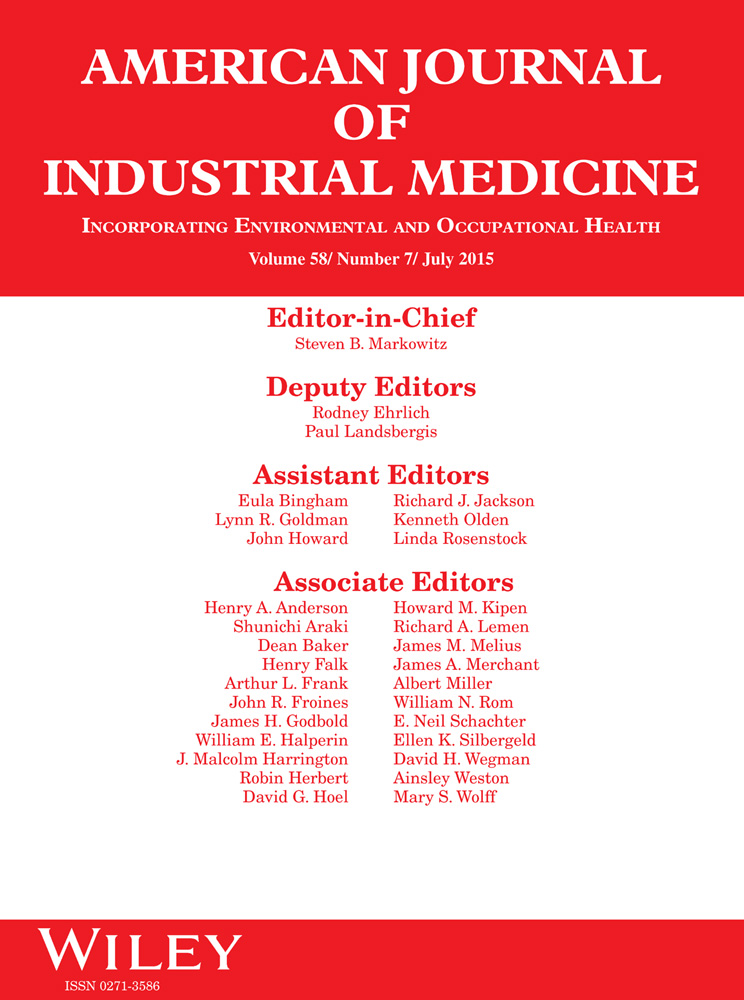Silicosis and chronic renal disease
Abstract
Background
Silica has been associated with end stage kidney disease and kidney dysfunction.
Methods
Calculated glomerular filtration rate, history of kidney disease or chronic dialysis, elevated serum creatinine, and stages of chronic kidney disease among silicotics identified in Michigan's Silicosis Surveillance System from 1987 to 2009 were reviewed to determine the prevalence of kidney disease in confirmed cases of silicosis.
Results
Twenty-four percent of 1,072 silicotics had a measure of kidney dysfunction (32.3% if diabetes or hypertension present vs. 20.2% if not). Sixty-nine percent of silicotics had Stage I or greater chronic kidney dysfunction versus 38.8% of the U.S. general population ≥60 years. No association was found between kidney function and measures of silica exposure.
Conclusions
Individuals with silicosis have an increased prevalence of kidney disease. More work to define the pathological changes associated with silica exposure is needed to understand the cause of silica's adverse effect on the kidney. Am. J. Ind. Med. 58:730–736, 2015. © 2015 Wiley Periodicals, Inc.




